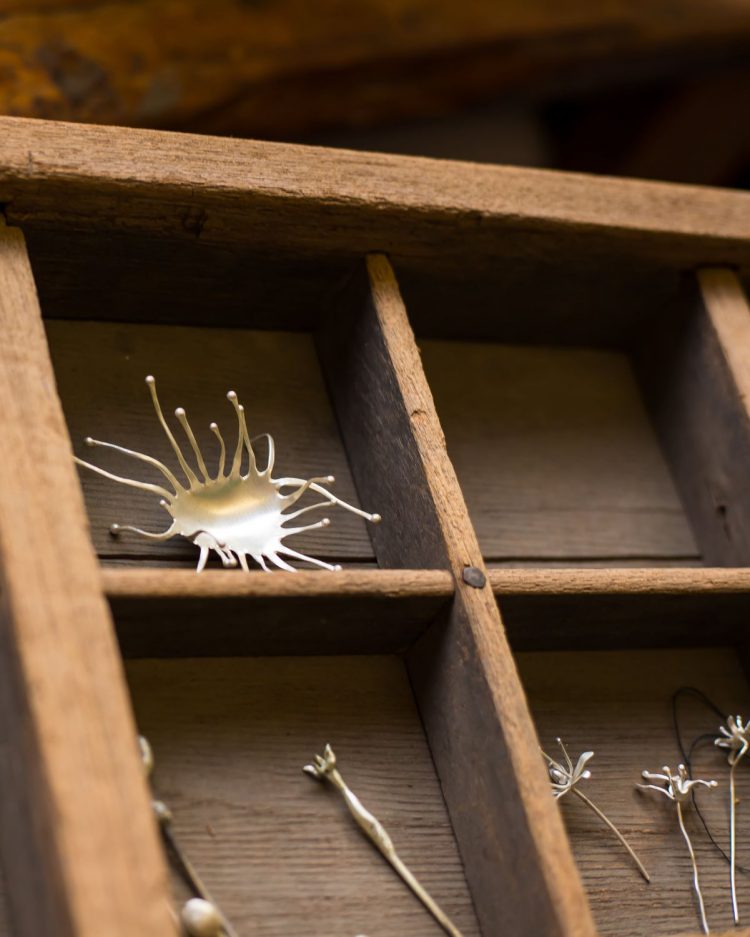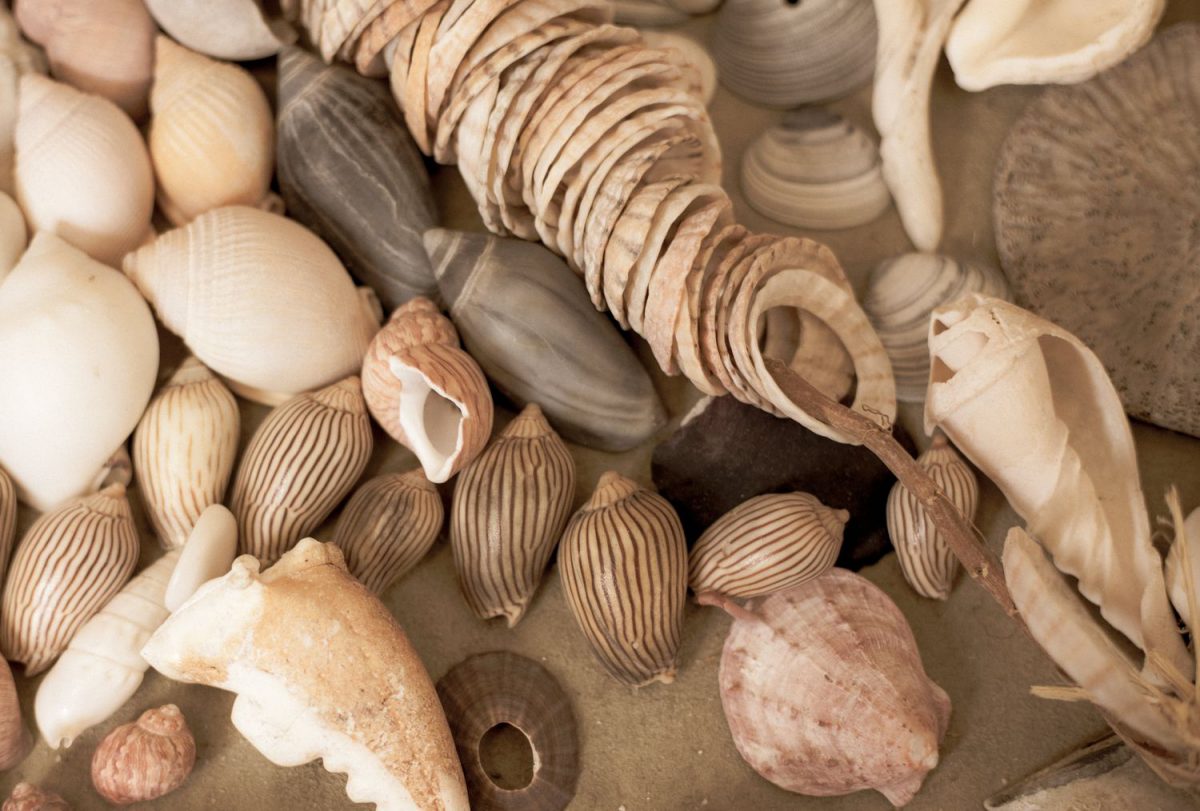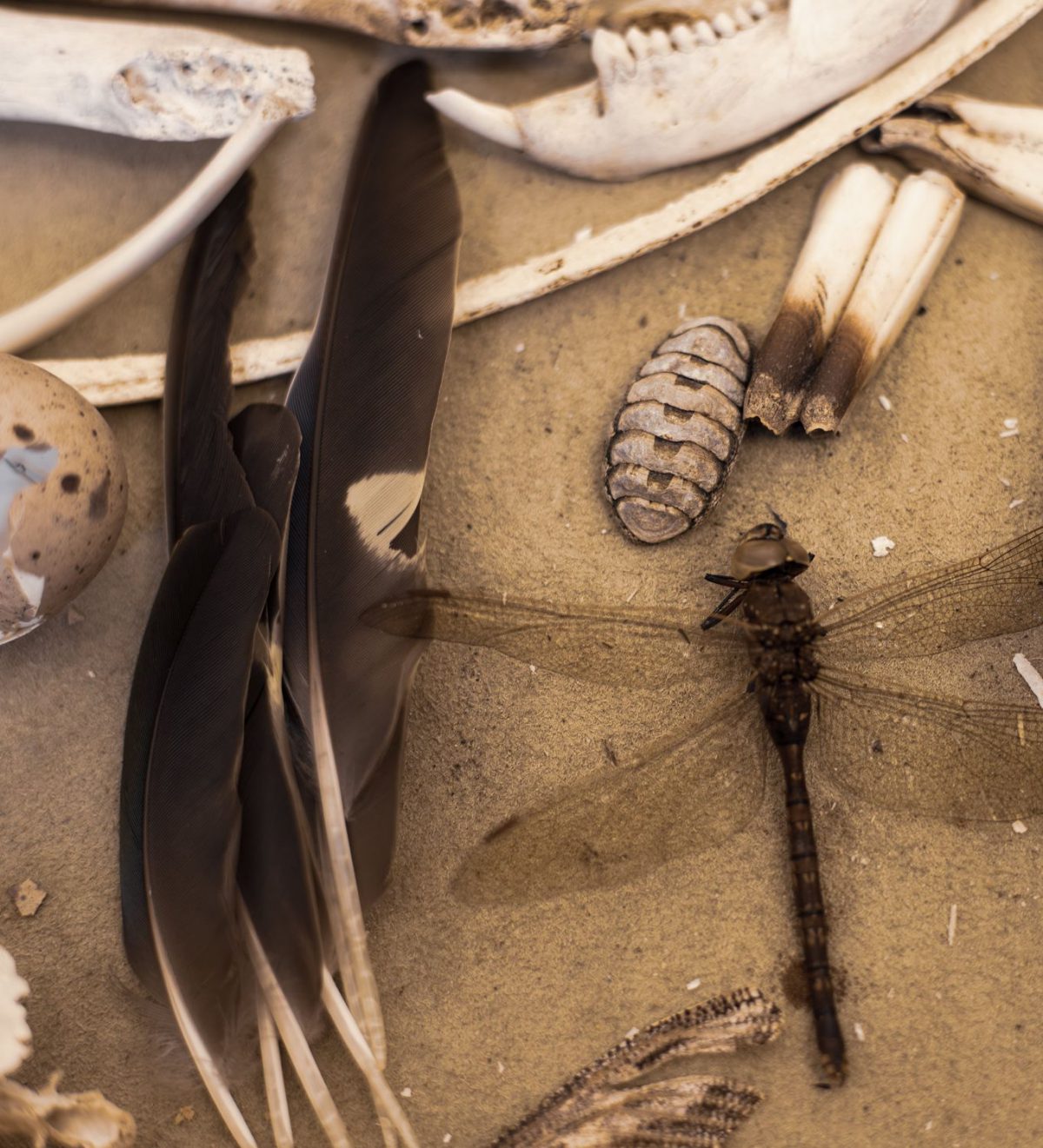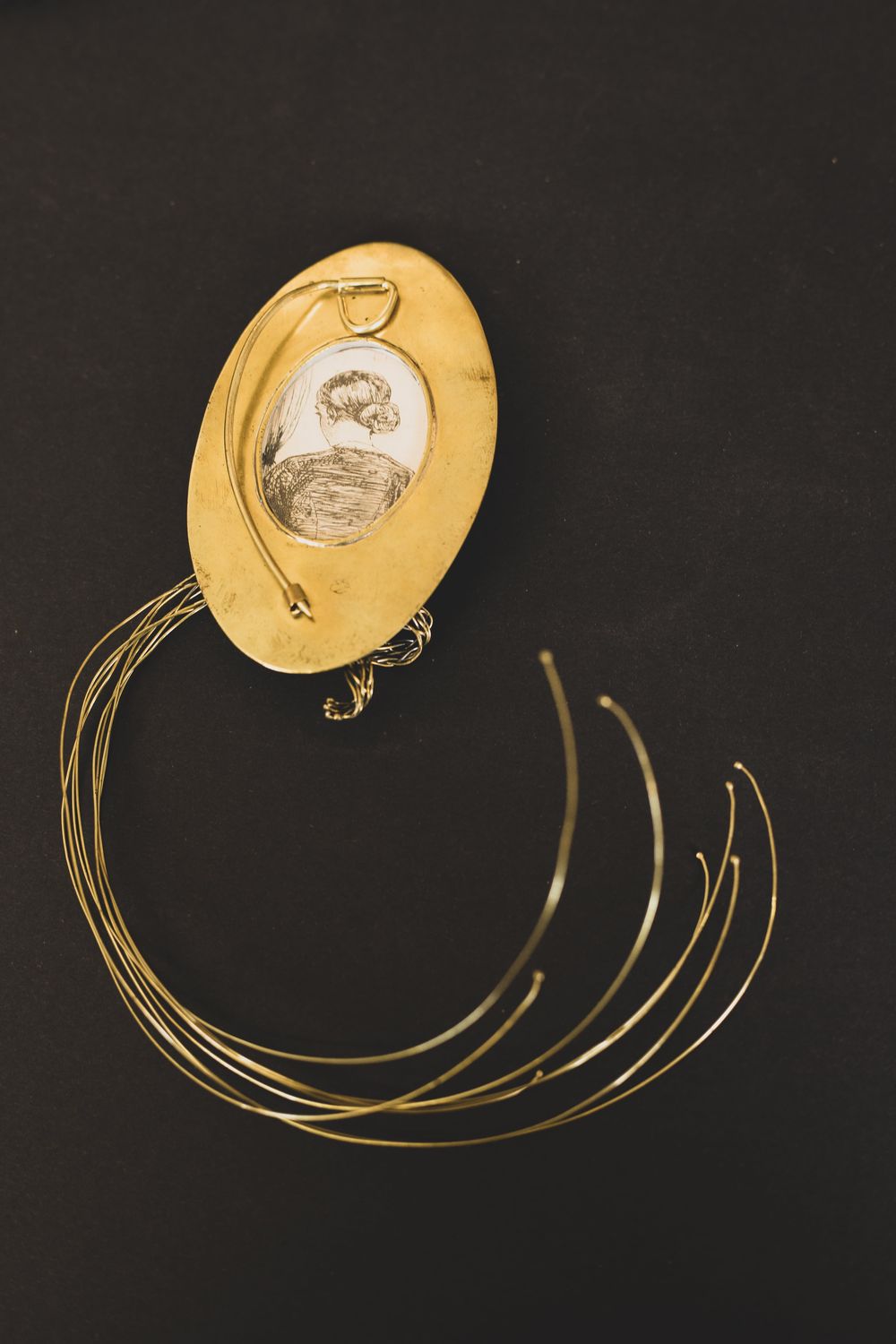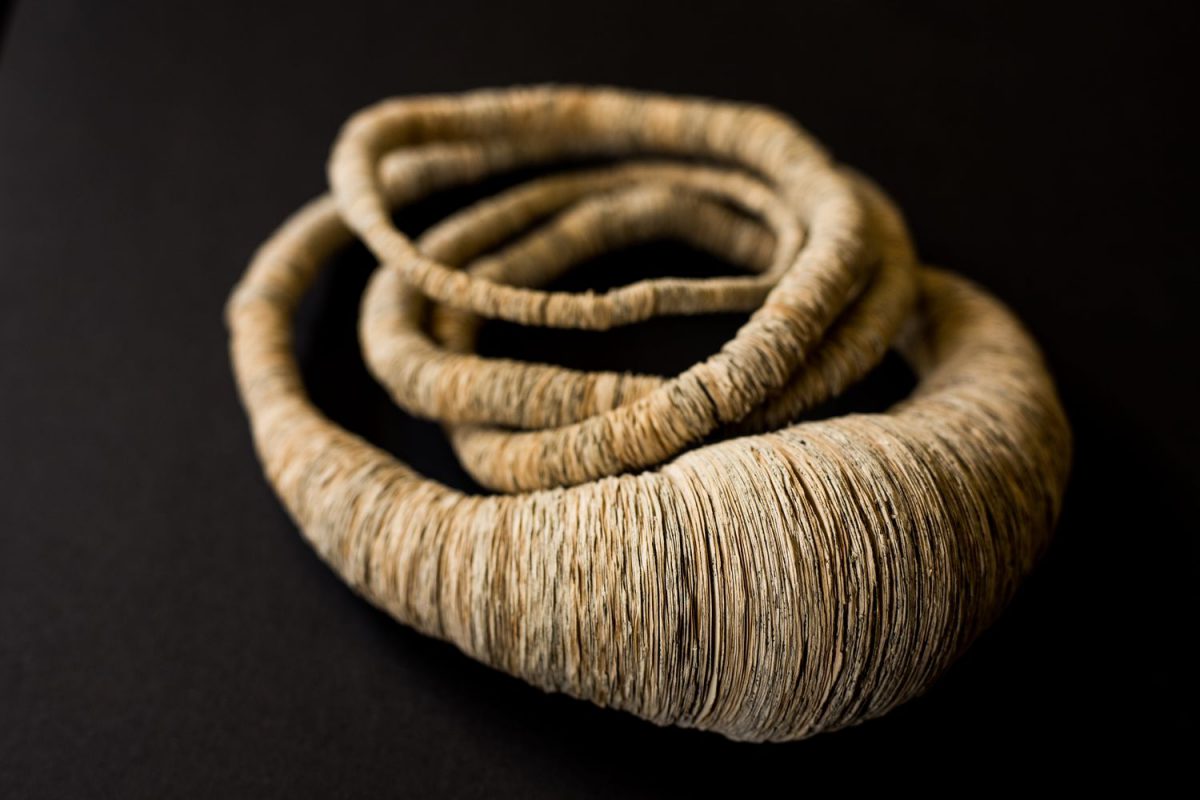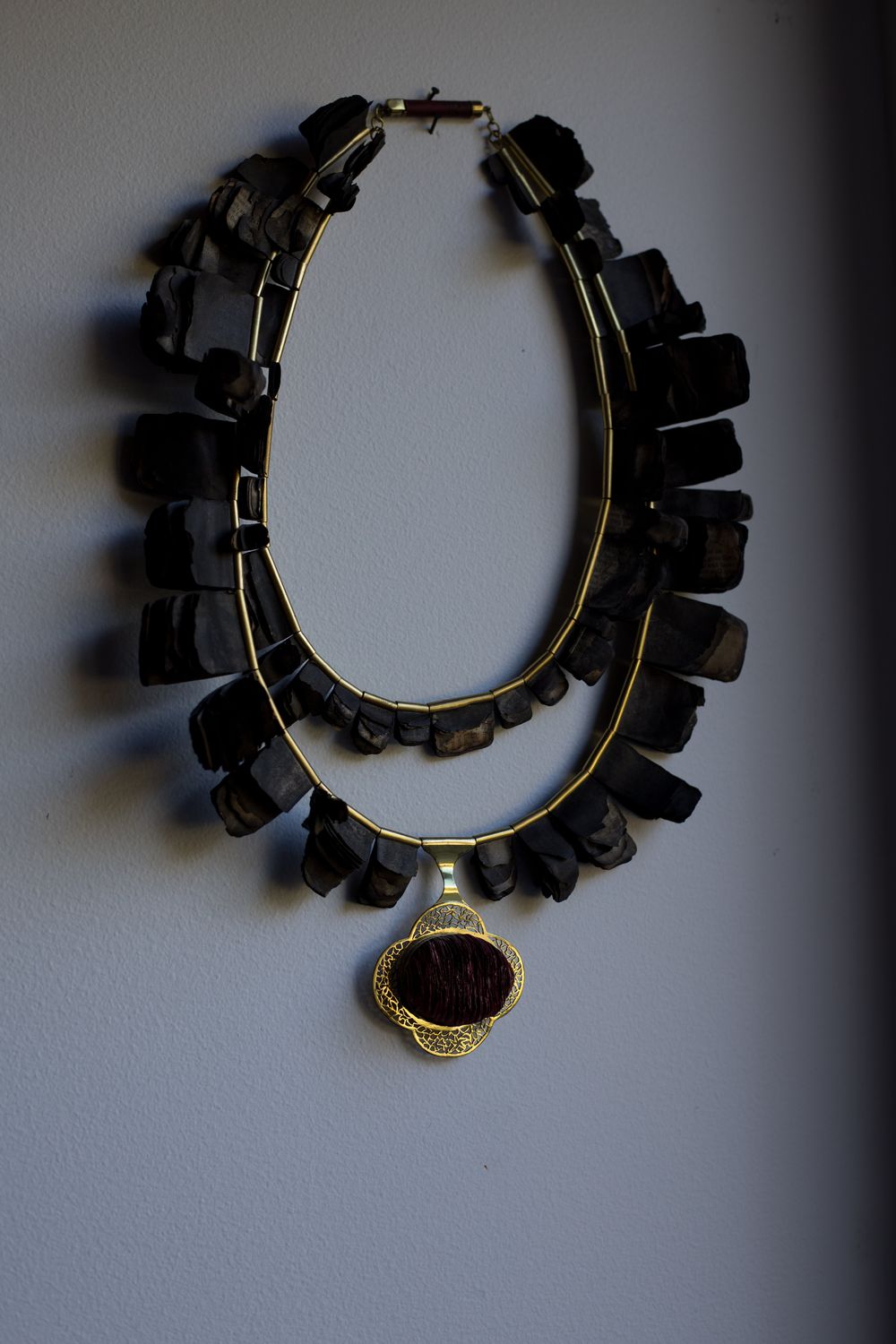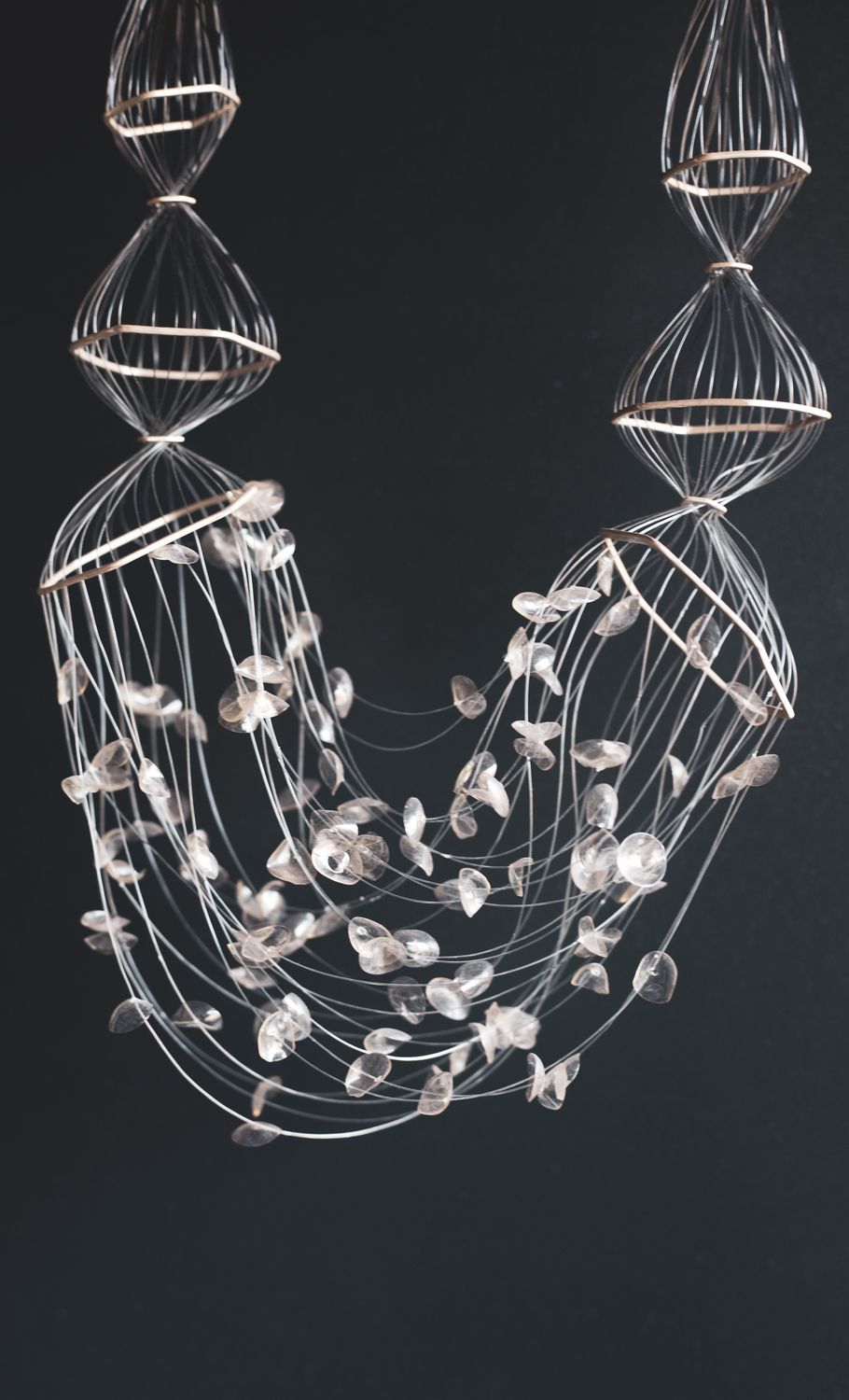
Sophie in her studio
Sophie Carnell is a Tasmanian silversmith and contemporary jewellery maker.
Recently she has been working on sizeable silver sculptures – large works – often for hanging on a wall: either resting on floating shelves; in open display boxes; or just suspended, creating intricate shadows. Some are isolated under glass domes.

Work in Progress for ‘Silent Sentinels’: fine and sterling silver.
Sophie lives and works on lunawanna-allonah / Bruny Island, in a small house overlooking unpopulated hills and a large, blue bay.
Three of us from Southern Salon recently visited her in her studio. We caught the ferry on a still, autumn morning and drove to her house.
We got lost, and a rattling noise coming from a wheel of the car caused us to stop on a dirt road along the way. Then, following Sophie’s instructions ‘because Google maps would lead you further astray’ we eventually turned right at the little white house, then past the church, and up the winding driveway. Or something like that. It made Sophie’s house feel even more isolated than just being on an island-off-an-island-off-an-island.
When we finally arrived, Sophie’s nearly blind dog greeted us then followed us everywhere we went, eventually settling on the floor of the studio while we talked, seemingly taking up almost a third of the floor space. We perched ourselves on stools in corners of the studio, and chatted with Sophie for a couple of hours. She spoke without hubris, always thoughtfully, and frequently using the language of a passionate defender of nature.

Sophie’s studio
Her studio is tiny, cluttered, and all about her work. Inside, her tools and her collectables had given over some of their space to the spread of the new work she has just finished for her upcoming exhibition at Hadley’s Hotel commencing in October 2023, ‘Silent Sentinels’. They are larger-than-life silver sculptures inspired by rare, vulnerable and endangered plants of lunawanna-allonah.
Sophie’s collections of the bits-and-pieces she has found here-and-there in the natural environment give her studio the feeling of a small, natural museum, from a lost world. These are the objects she has gathered on walks, for remembering and inspiring. They are scattered throughout the studio, but also laid out and organised in the many specimen drawers under the workbench. ‘That drawer is the King Island drawer’ she told us as we started opening them.
The drawers are full of foraged items from around Tasmania and elsewhere – shells in rows of matching types and sizes, bones, animal jaws and teeth, wings, pebbles, seeds, feathers, sea urchin shells, seahorses, eggshells, dragonflies, a lizard’s skin, and shark’s eggs. It felt like an eye-of-newt, wing-of-bat kind of place. And while talking to us about her silversmithing, the word ‘alchemy’ came up in jest more than once as she described what happens to the silver as she works it.
Sophie has a fine arts degree from the University of Tasmania School of Creative Arts, in painting – although she ended up working mostly, three-dimensionally with glass. While she has taken short courses in silversmithing, her silversmithing skills come largely from reading, asking, researching, making, and experimenting. She spoke of how much she loves working with silver; the intricacy of the making, the preciousness of the silver, the process, and the satisfaction of ’getting that organic feel with the silver when making a flower’.
In the past, Sophie has worked with other materials as well, such as plastic, wood, stone, disposable contact lenses, glass, feathers, and paper. And she talked about wanting to do so again whenever an opportunity might present itself. ‘If somebody said to me do you want to be part of an exhibition about found materials I’d definitely be putting my hand up, saying yes please’.
When asked about inspirations for her work, Sophie responded quickly, ’It’s connection to the land really. That’s what I’m about’. Often, for her, that means trying to bring nature into view. I noticed one of the windows in her studio has the frosted message: Presence, Absence. Poignantly placed on the shelf in front of those words is one of her pieces, in a glass dome – a silver sculpture of a plant Sophie invented. This one is not a sculpture of an endangered plant, but of an imaginary one. A plant of tears.

‘Crying for the Wild’ 2023. Fine and sterling silver, glass beads, glass dome.
She spoke of how much she loves working with silver; the intricacy of the making, the preciousness of the silver, the process, and the satisfaction of ’getting that organic feel with the silver when making a flower’.
Sophie’s most recent work contemplates the relationship we humans have with our natural environment. It is also a call to arms. For example a tiny orchid which is only three centimetres tall and which would mostly go unnoticed by any passing bushwalker, has been turned into a large silver sculpture demanding of attention. Its beauty and size insisting you notice it. Likewise, the Utricularia or Bladderwort, an aquatic, carnivorous plant, rarely seen on Bruny Island and only about 15 centimetres tall, has been turned into a commanding silver sculpture. It hangs suspended on the wall as a beautiful giant specimen. Seen, unseen. Presence, Absence. Abracadabra, Going-going-gone.
Sophie was born in England and grew up there. She also spent some of her early years in Ireland, on a remote island off the west coast. Eventually she moved to Tasmania, another island. She hasn’t returned to England, but is now heading off to make that journey. She is taking with her a bag of silver tokens she has made, each one about the size of small pebble, sealed and containing something personally meaningful, something to connect past and present. She will leave them all behind, hiding each one in a secret place – in locations she calls her ‘heart pull’ places – like in the wedge of an unforgotten tree, or in the pile of stones where her father is buried. She feels it is time to go back, and there is a sense that her work is now helping her focus on her own past connections and disconnections, as well as the other way around.

Sophie is settled in Tasmania but is still aware of her foreignness. And yet she also feels a disconnect with England. For her upcoming exhibition Sophie is making silver sculptures of vulnerable plants native to where she now lives, and showing them in a way that references Victorian England – botanicals captured and preserved, to be gawked at in wonder. The antipodes on display. Some of the pieces will be pinned in boxes, a traditional method used to display specimens that Sophie described as ‘brutal’. Some of the larger pieces will be seated on floating shelves, their roots spilling down. Some are under glass domes. One piece is boldly trying to escape from its dome, another includes an insect, a silver butterfly, caught on its silver leaf – alluding to insects in European still life paintings, reminding us of transformation and decay.
Some of the larger, upright, silver botanicals look like they could have escaped from Jack and the Bean Stalk – which, for me, also conjured up a fairytale image of Sophie carrying her bag of magic silver pebbles, back to the land her childhood.
We asked her how long it took her to make one of the silver pieces for her upcoming exhibition, a smaller piece about 15 centimetres across – a Forest Germander. She told us she uses a clock to time each piece – knocking it on and off like a chess clock as she works. That piece had taken many hours, just working with the silver. That time did not include the preparatory work: the time spent researching, poring over reference images, or the time sketching and making preliminary paper models. Nor did it include the time finishing it off: polishing it back, and coating it (three coats) with an anti-tarnishing product applied with a tiny brush. And of course, nor did it take into account the years of learning, experimenting, and developing the knowledge and skills necessary to produce something so thoughtful and intricate.
Working with silver is hard work. She described it as ‘loud and dirty’. There is a lot of cutting, hammering, grinding, drilling, polishing, soldering, and the use of acid baths. Sophie said she often feels guilty using silver, because of the environmental impact of mining. So, she makes a point of only buying her silver from accredited ethical sources as well as giving a percentage of the profits from her sales to Tasmanian Land Conservancy.
When asked why she likes working with silver, Sophie referred to the purity of the medium, but also the history that it’s steeped in. She uses silver to present the beauty of the plants themselves, as well as the history inherent in precious metals like silver. She invites us to look at these silver botanicals in wonder, as if we had wandered into a drawing room in Victorian England, or into an elaborate church vestry to ponder its many sacred objects, like the Monstrances. But as she explained, her sculptures ‘are not to the glory of God, but to the glory of Nature’.
Sophie Carnell’s ‘Silent Sentinels’ exhibition is on at Hadleys Hotel in Hobart from 5 October to 5 December, 2023.
Sophie is represented by Gallery Sally Dan Cuthbert, Sydney.

